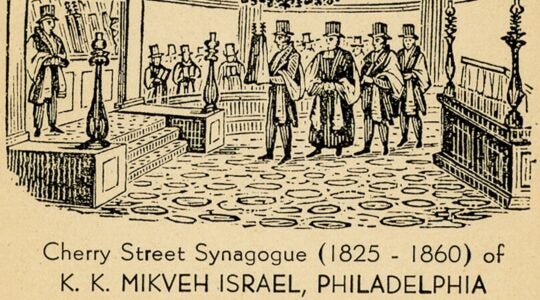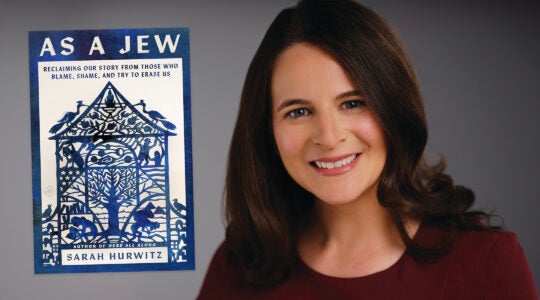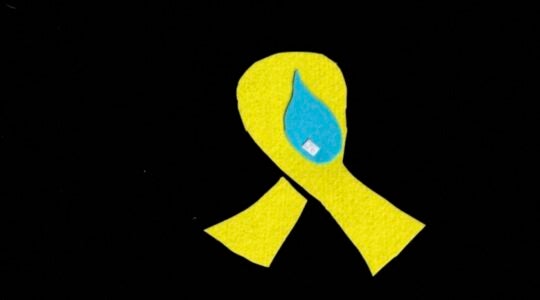What makes a hero? To the ancient Greeks, it was someone who could achieve kleos, “glorious renown,” by performing “mighty exploits.” By this definition, women too were able to become heroes by using their own feminine powers to achieve greatness.
Many women in the Hebrew Bible lack agency and are passively acted upon by others. Throughout Tanach we have instances where a woman is raped by a man from a surrounding community (Genesis 34), given to a Pharaoh (Genesis 12, 20), forcibly taken into the court of King Ahasuerus (the book of Esther), raped by a half-brother (II Sam 13,) killed to fulfill a father’s vow (Judges 11), or gang-raped and murdered (Judges 20).
There are of course women who are active characters, perfectly capable of making and carrying out bold plans.
There are of course women who are active characters, perfectly capable of making and carrying out bold plans. There are the midwives who defy Pharaoh’s decree and save Jewish babies, Miriam the prophetess who sings and leads other women through the parting of the Red Sea, the daughters of Zelophchad who question the system of inheritance and gain the land they love, and the wise woman of Avel Beit Maaka who saved the entire city by sacrificing the one wanted man (II Samuel 20). One of my favorite moments of female agency in the Hebrew Bible is when our foremother Rachel steals her father’s idols and tells him “I will fight you with the way of women,”(Genesis 31:35).
Why do we see Tamar, who cons her father-in-law into sleeping with her to fulfill his religious and familiar obligations, as so strongly meritorious when there are many other women able to take decisive action? Why does she merit such a recognized status as a heroine when there are so many other examples of female characters renowned for their actions?
Her father-in-law leaves her to be a widow, without children or status, and unable to remarry as she waits for his last living son to grow up.
At first glance,Tamar seems to be a typical woman, living under the patriarchal auspices of her husbands and father-in-law, Judah. All we are told of her when she is introduced is her name (Genesis 38:5). She is married to two of Judah’s sons, and when each one of them dies in turn, Judah asks her to return to her father’s house to wait for his youngest son to be old enough to marry her. Her father-in-law leaves her to be a widow, without children or status, and unable to remarry as she waits for his last living son to grow up.
What Judah does not understand about his responsibility to those in his family, he learns from Tamar.
Unlike Medea of Greek mythology, another woman who does “mighty exploits,” Tamar uses vengeance to achieve good. Tamar responds to Judah’s insensitivity and neglect by turning her father-in-law into her rightful sperm donor. The Bible calls the place where she doffs her widow’s garments and disguises herself with a scarf “petach eynaim,” the opening of the eyes (Genesis 38:14). This marvelous detail alludes to Tamar’s insight and the ingenuity of her plan. What Judah does not understand about his responsibility to those in his family, he learns from Tamar.
Tamar’s lesson is one of pledges. When one makes a pledge one must keep it and when one promises a child to a woman, one must make sure that child comes into the world. Tamar asks Judah for a pledge (Genesis 38:16), a way for her to know that he will in fact send the kid of a goat he has promised in payment for her services as the prostitute he assumes her to be (Genesis 38:15). When Judah tries to pay his pledge, his friend the Adullamite who is sent as his emissary discovers that no prostitute has frequented the place (Genesis 38:21). The pledge goes unpaid and Tamar retains Judah’s seal, cord and staff, his identity markers, the ancient equivalent of a driver’s license, credit card and passport.
When Judah is asked to pronounce a judgment for his pregnant daughter-in-law, he proclaims, “Let her be burnt” (Genesis 38:24).
Three months later, coincidentally the amount of time it generally takes for a pregnancy to show, Judah is told that Tamar is with child. Conveniently for him, if she is killed for sexual impropriety, he will no longer need to give her to his third son, who is ironically named Shelah, “hers.” When Judah is asked to pronounce a judgment for his pregnant daughter-in-law, he proclaims, “Let her be burnt” (Genesis 38:24).
However, Tamar refuses to concede. She sends Judah the seal, cord, and staff that he gave to her when she was disguised as a prostitute to let him know that it was the owner of these items who impregnated her (Genesis 38:25). The recognition is immediate; Judah declares, “She is righteous, it is mine”(Genesis 38:26).
Judah, with Tamar’s pedagogical assistance, learns to recognize both his own responsibilities as well as the righteousness of others.
Tamar’s revenge is that Judah makes this verdict publicly, affirming her status of innocence and granting her credit for righteousness. Furthermore, Judah’s statement is no insincere piety, muttered to absolve himself of liability. Rather, it is a life changing transformation of character, as we see from the next twelve chapters of Genesis. Judah, with Tamar’s pedagogical assistance, learns to recognize both his own responsibilities as well as the righteousness of others. Tamar has gained renown.
Tamar’s plan brings new life into the world, where Medea takes it away.
This is why Tamar and Medea, a Greek woman who gains kleos, are so vastly different. Tamar’s plan brings new life into the world, where Medea takes it away. Medea murders her own children to spite her husband Jason. Before the murder she says, “Evil conquers me. I understand the evil I’m about to do and yet my raging heart is stronger than my plans,” (Euripides, Medea, lines 1078-79). Tamar certainly could have planned to kill Judah or Shelah to avenge herself, but instead she continues their line, and bears Judah’s child.
In fact our tradition holds Tamar up not just as heroic but as a person from whom the ultimate good will emanate.
Tamar is a heroic figure because she is in a situation without a resolution, without a chance of having a child or a future as defined by the terms of her world, and still she finds a way out. She refuses to remain trapped as a widow in her father’s house, and instead creates a means to rescue herself. Her ability to forge and execute a plan to be impregnated by a member of Judah’s household makes Tamar a doer of mighty exploits. Tamar’s open eyes, creative action and decisive planning, allow a new resolution to be achieved.
In fact our tradition holds Tamar up not just as heroic but as a person from whom the ultimate good will emanate. Her child Peretz is an ancestor of King David, whose line is thought to produce the future Messiah. It is the heroism of women which set it all in motion.
Tamar teaches that each of us, whether we envision ourselves as heroes or not, has agency and the ability – no matter how difficult the situation – to find a way to open our eyes and create a new reality.
Notes:
- Women on the Edge: Four Plays by Euripides ed. and trans. Ruby Blondell, Mary-Kay Gamel , Nancy Sorkin Rabiniowitz and Bella Zweig, note 107, page 425. NY: Routledge, 1999.
Beth Kissileff is the editor of the anthology Reading Genesis and the author of the novel Questioning Return. She has taught at Carleton College, the University of Minnesota, Smith College and Mount Holyoke College. Visit her on line at www.bethkissileff.com.
Posts are contributed by third parties. The opinions and facts in them are presented solely by the authors and JOFA assumes no responsibility for them.
If you’re interested in writing for JOFA’s blog contact shira@jofa.org. For more about JOFA like us on Facebook or visit our website.
The New York Jewish Week brings you the stories behind the headlines, keeping you connected to Jewish life in New York. Help sustain the reporting you trust by donating today.





